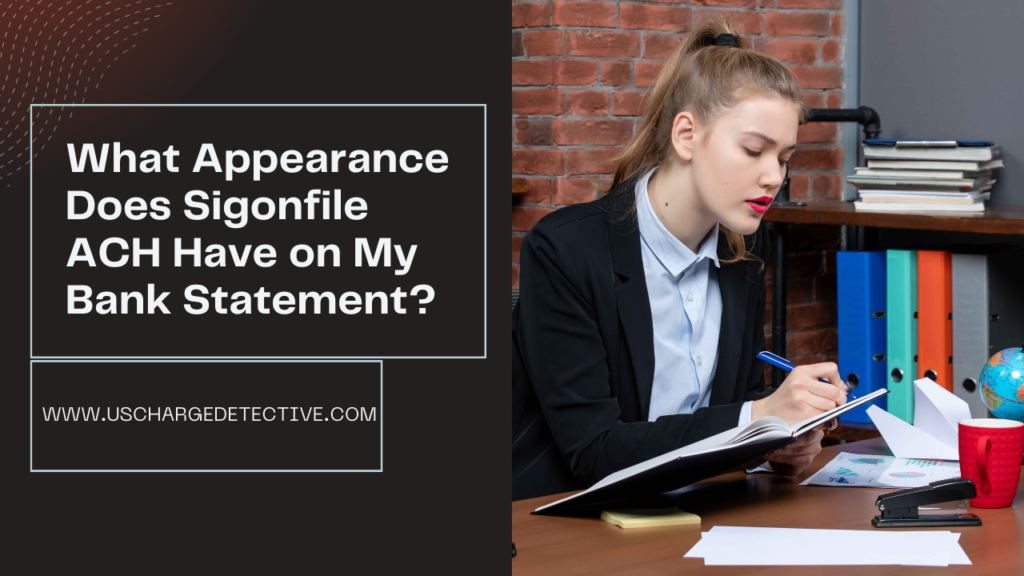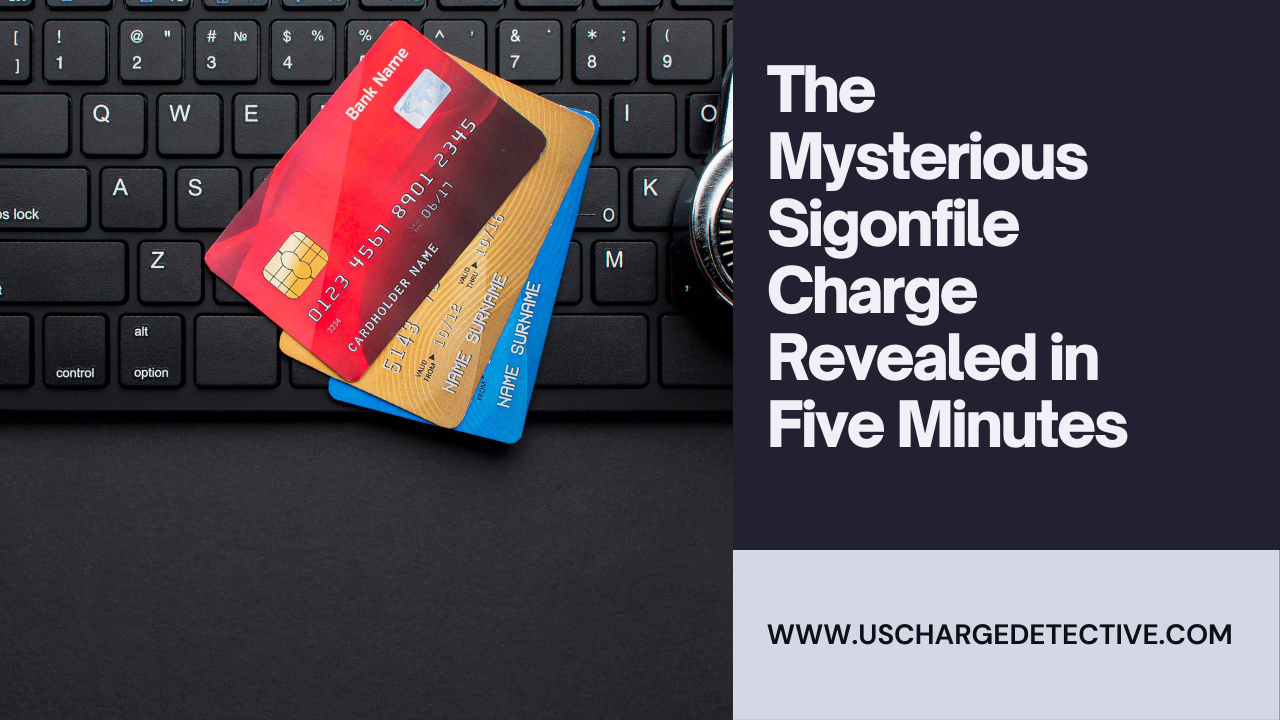As I do every two weeks to confirm all the transactions on my bank statement, I was startled to notice an odd charge called “Sigonfile.” Since it was the first time this accusation had surfaced, I was quite interested in its origins.
Upon conducting extensive investigation, I discovered that it is not a well-known banking term and requires a definition that can be used to bank accounts. Since this phrase appears on statements, account holders like me have been concerned.
Although it might be a description of specific transactions on bank statements, precise information is usually the reason for worry and clarity. Let us go deeper!
Sigonfile Charge is what?
As previously said, some individuals reported a charge as a fraud on an internet forum such as a Complaints board, Redditor, etc., so it is not a particular financial transaction phrase.
Conversely, though, it is directly connected to RealPage, a top company in the property management software market. The payment component of this company is called RealPage Payments.
It makes it easier to submit rent online by tenants, handles payments, and makes sure they get to the bank accounts of the property managers. RealPage bills for this convenience.
What Appearance Does Sigonfile ACH Have on My Bank Statement?
My bank statement showed the charge as “Professional Pro/Sig-onfile,” “Tradest-Crecoper-Des-Sig-onfile-ID,” or a similar phrase.

What Did I Do When I Found the Charge?
After discovering the charge on my bank statement, I moved quickly to:
Call the Bank
Notify the bank of the unidentified charge and provide all the details necessary to make it clear.
- Corporate Verify your recent transactions for any possible fraud.
- The bank changes both your account’s username and password right away.
- Other regulary checked my account for unforeseen activity.
- When identity theft or fraud occurs, the bank sets off the alert on my credit report.
Advice to Avoid Unauthorized Charges
Following are some advice to prevent illegal charges:
Check your bank statement.
The first and most important advice is to routinely look for any unidentified activities in your bank statements.
Do Not Use Public WI-FI Networks
Use of public Wi-Fi networks should be avoided when doing financial operations since you run the danger of losing private data.
Program Notification Alerts
Getting alerts on transactions in real time is advised; these can be sent via email or SMS.
Password Strengthening
Set up strong passwords for your online banking activities. Two-factor authentication is advised of course.
Avert Email and Message Scams
Click on no phoney emails or messages. Watch it out.
Updating Software on Device
Updating the software on your device and banking app is highly advised.
FAQs: Sometimes Asked Questions
Which firm is Sig-onfile?
Rather, the phrase refers to a kind of charge that shows up on a bank statement and is connected to fraudulent activities or transactions. Legal operation of any organized company is impossible.
Sig-onfile insurance is what?
For that reason, additional information is not needed from the insurance company. It does, however, refer to a specific type of charge that typically relates to fraud that appears on bank accounts.
What is ACH Sigonfile?
Unknown to many, this idea is connected to fraudulent transactions but has nothing to do with ACH payments. It is a charge on a bank statement that is usually linked to fraud.
Conclusion
Better financial management requires complete understanding of these fees. It can be accomplished via proactive review of bank account statements to prevent unauthorised charges.
The wisest course of action is to report such a scam to the bank right once. An other section of the bank looks into the fraud.
